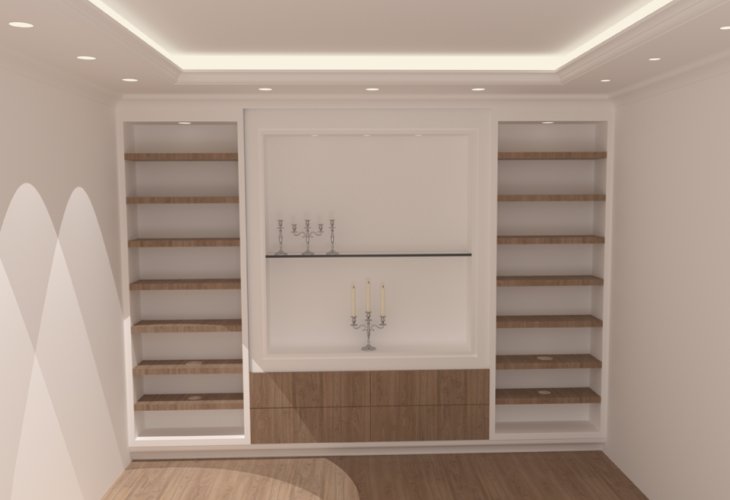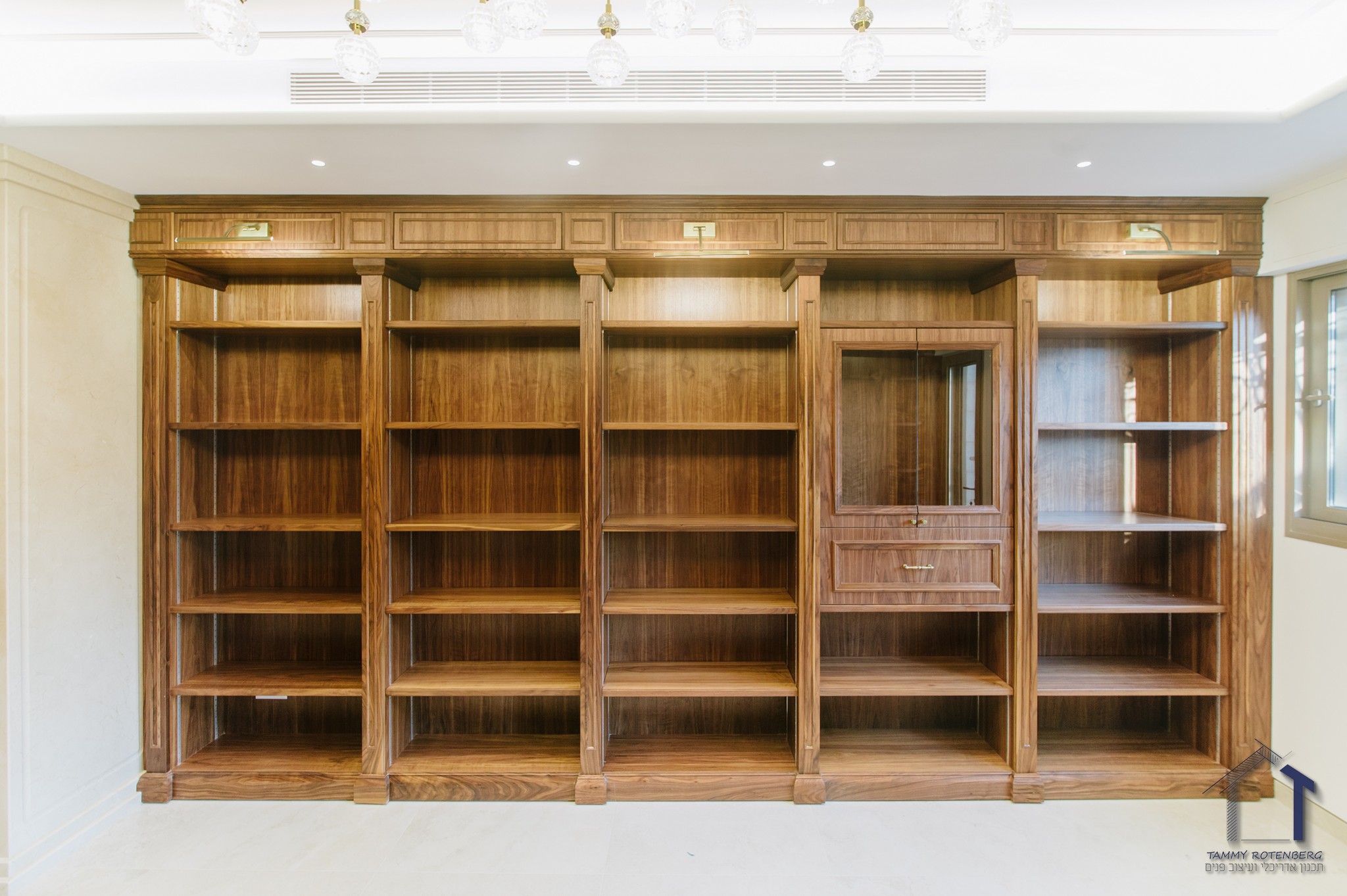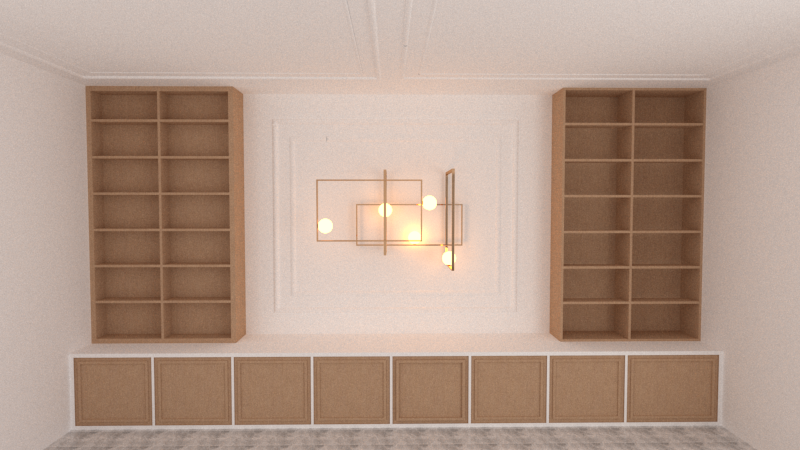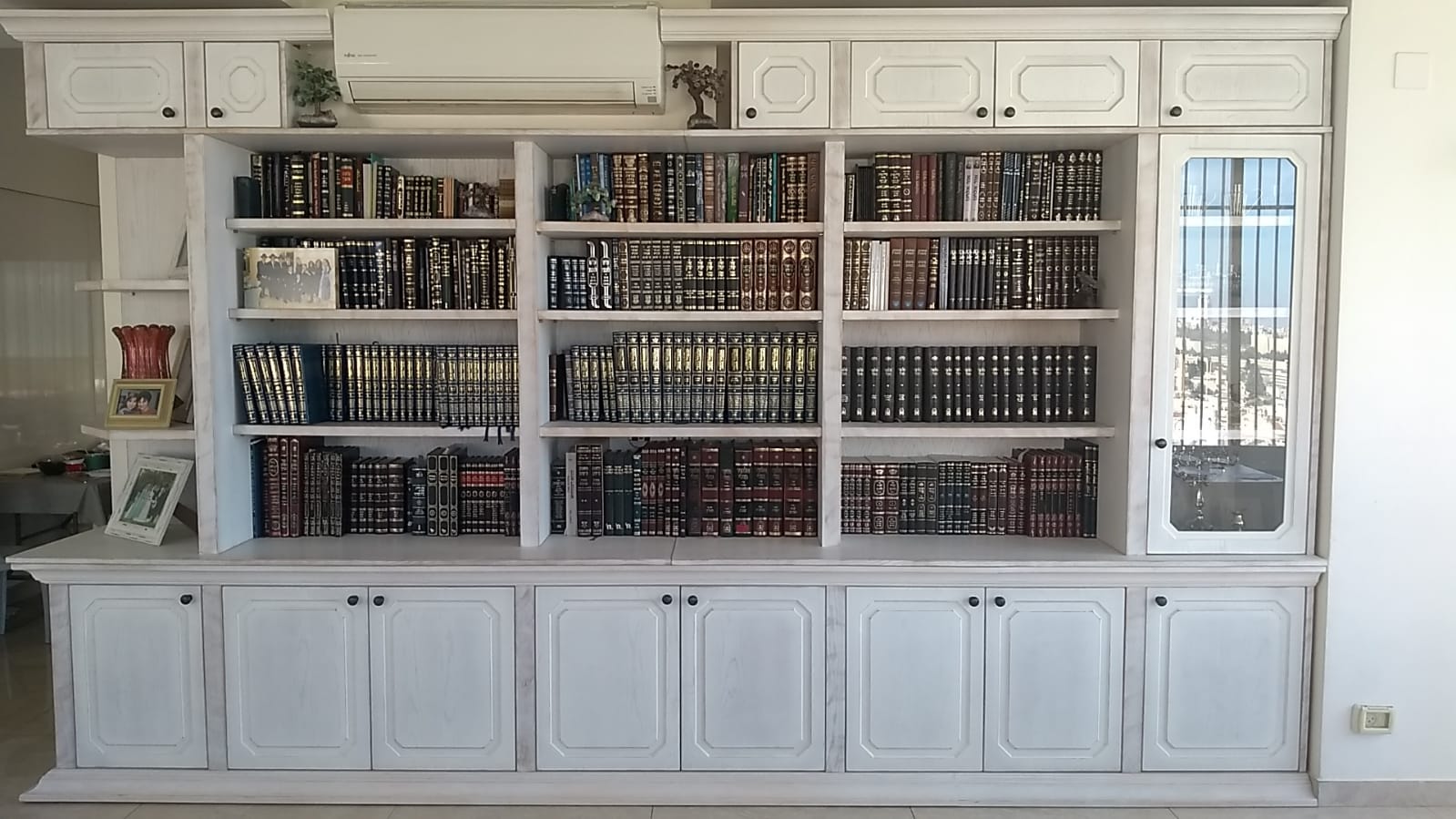Choosing the Perfect Home Bookshelf: Wood or Drywall?
The Jewish home often features a special holy bookshelf. With various design options available, which will you choose?

One of the most characteristic pieces of furniture in a Jewish home is the holy bookshelf.
Over the years, bookshelves have evolved. Besides their primary use, they now often include a display case for holy artifacts, silver items, family photos, and even a sound system and lighting. In fact, in a Jewish home, the bookshelf is a major design piece.
As with anything, bookshelves come in various design styles. Some are more minimalist, like drywall shelves, often integrated into niches and maintaining a clean look. Others are in a more classic style, adorned with details and usually made of wood.

How do we go about planning a bookshelf?
First, when I start planning a bookshelf, I jot down everything I want it to hold – books, items, a display case, family photos...
In the second stage, with all the details at hand, I begin the planning: Book shelves need a depth of about 12 inches, whereas a display case might require more (depending on what you place in it).
It’s essential to calculate the available space versus your needs and see if everything fits or if some things need to be omitted.
Now it's time to decide what type of bookshelf you want. Debating between a classic solid wood shelf and the clean look of drywall?
Here are some details on the differences between a wooden shelf and a drywall shelf.
Price: Drywall shelves are cheaper.
Durability: Drywall shelves are less durable and have a significantly shorter lifespan.
Maintenance: Drywall requires maintenance, while wood does not.
A major drawback of a drywall shelf is the lack of flexibility in design. It can't be moved later. Furthermore, drywall gets dirty very easily (of course, you can paint it, and it will look like new).

Shelf spacing: In a drywall shelf, the height of each shelf ranges between 3-4 inches, depending on the load it will carry. In a wooden shelf, the height is about 1-1.2 inches. Ultimately, with a wooden shelf, you get an extra shelf because you save on the shelf height itself...
Additionally, the distance between columns in drywall is a maximum of 24 inches, whereas in wood (with a 1.2-inch thick plywood shelf), it can go up to 40 inches.
Unlike a wooden shelf, the height of drywall shelves is fixed and cannot be changed. That's why I recommend measuring the height of your books beforehand. It makes it easier to decide how many high, low, or medium shelves you need.

One significant advantage of wood is the ability to carve it: creating decorations, door frames, engravings, etc., which greatly enhance the appearance of the shelf, unlike drywall, which can't be engraved on (the board thickness is 0.5 inches). However, with drywall, we can create different textures and protrusions, which can also greatly enhance the look.
In a drywall bookshelf, you can also add polyurethane moldings, creating delicate and beautiful frames.
I like to place the drywall bookshelf inside a niche, achieving a clean look. In contrast, a wooden bookshelf is a piece with presence, which we don’t want to hide.

For those who are undecided, love wood but are deterred by the cost, I recommend combining both. Build the base of the shelf in drywall and combine wooden shelves. This way, you also avoid high, bulky drywall shelves and ultimately gain an extra shelf. Another option is to mix in glass shelves.
Play around with your imagination. You can place cabinets on the bottom part of the bookshelf, with books only at the top.
It's a good idea to add lighting to the parts you want to highlight (e.g., the display case, family photos). It will significantly enhance your shelf.
We can also play with different planes; a shelf doesn't need to be all in one plane. This also gives a very nice effect. For instance, if the entire shelf is 12 inches deep, and the display case in the middle protrudes by another 4 inches, it gives a very nice effect (if you're bold, add lighting to emphasize the plane difference - you'll get an amazing result!).
Next week, with Hashem's help, we will review planning a shelf for 5,000 books, from start to finish, including photos.
Tammy Rotenberg is an architect and interior designer. For questions and comments: office@tammyrotenberg.co

